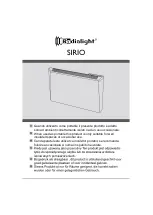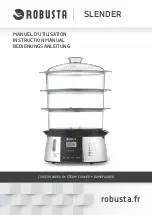
PUMA HANDLEBARS CONTINUED...
Once the headstock is in position and tightened, insert it into the front of the bike
Some adjustment to the headstock maybe needed to get your handlbars angled nicely
for comfort. Simply loosen the head stock and rotate the handlbars until a comfortable
angle is acheived and retighten.
Align the handlebars and tighten the single allen key on the top of headstock to secure
the handlebars at the desired height. Check the postion of the handlebars and adjust if
needed.
12
All bicycles (electric bikes included) have left and right side pedals. Make sure you identify
each one. This image shows how to identify each pedal. You can see the ‘R’ written on
this pedal, denoting this is the right side pedal, to be used on the right side of the bike (if
you were sitting on the bike).
Pedal sides are denoted with ‘L‘ and ‘R‘ as shown circled red in above photo. ‘L‘ denotes left
pedal and ‘R‘ denote right pedal
The right side pedal mounts to the right side crank (if you were sitting on the bike) and
left side pedal on the left crank. The right side pedal is a right hand thread, it will tighten
by turning clockwise (normal). The left side pedal is a left hand thread and will tighten
by turning anticlockwise (opposite normal). It is essential not to confuse which pedal is
used where and not to cross thread the pedal. If it feels too tight, you might have made
a mistake. The simplest way of remembering is that the pedals always screw on toward
the front of the bike. The pedals are designed this way so that the act of pedaling (while
riding) does not loosen the pedals over time.
Screw in the pedals as described above for both left and right. Depending on the type of pedal
they can be tightened using an allen key on the inside as shown above or by tightening with a
spanner inbetween the pedal and the crank (model dependant).












































